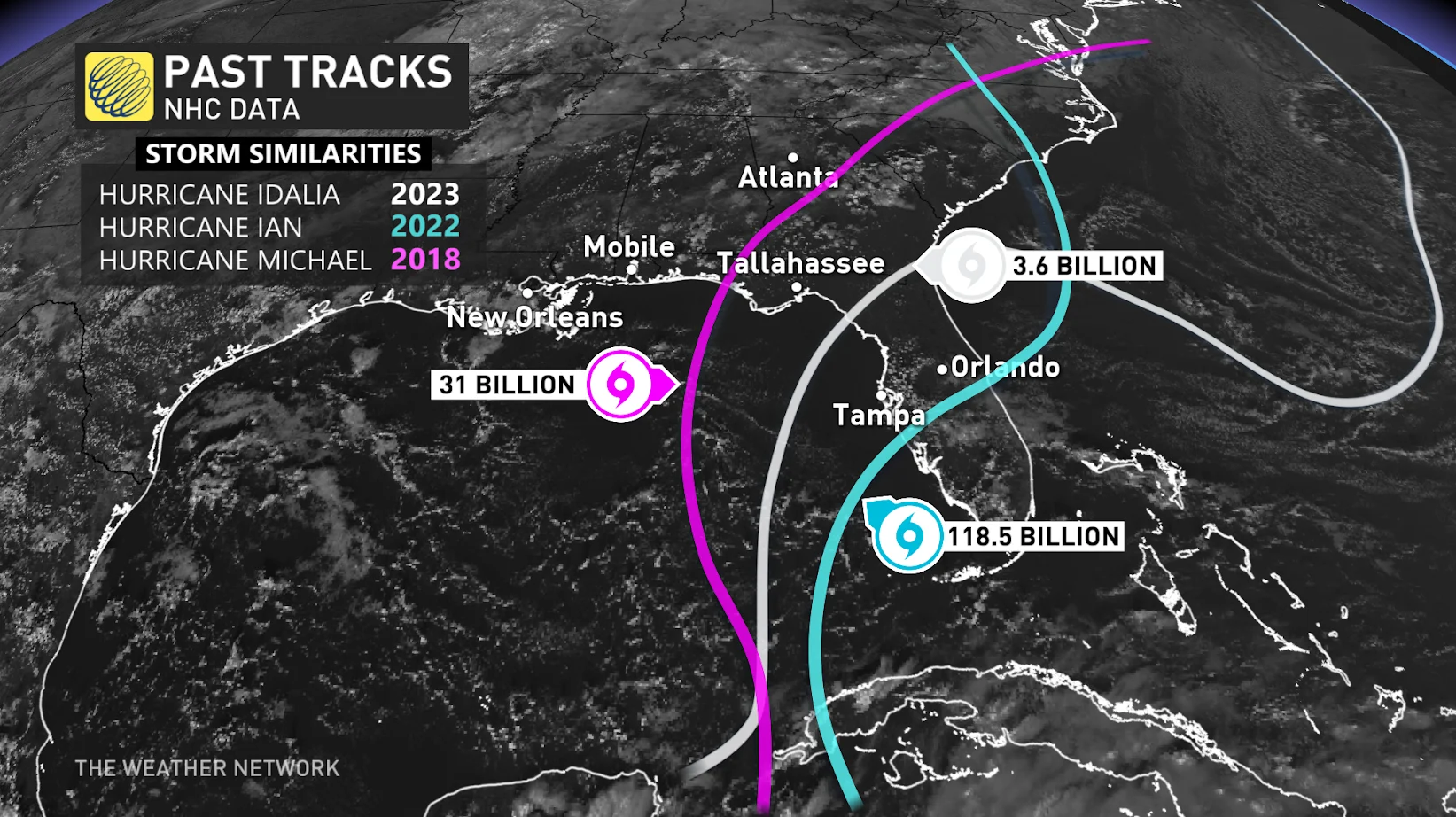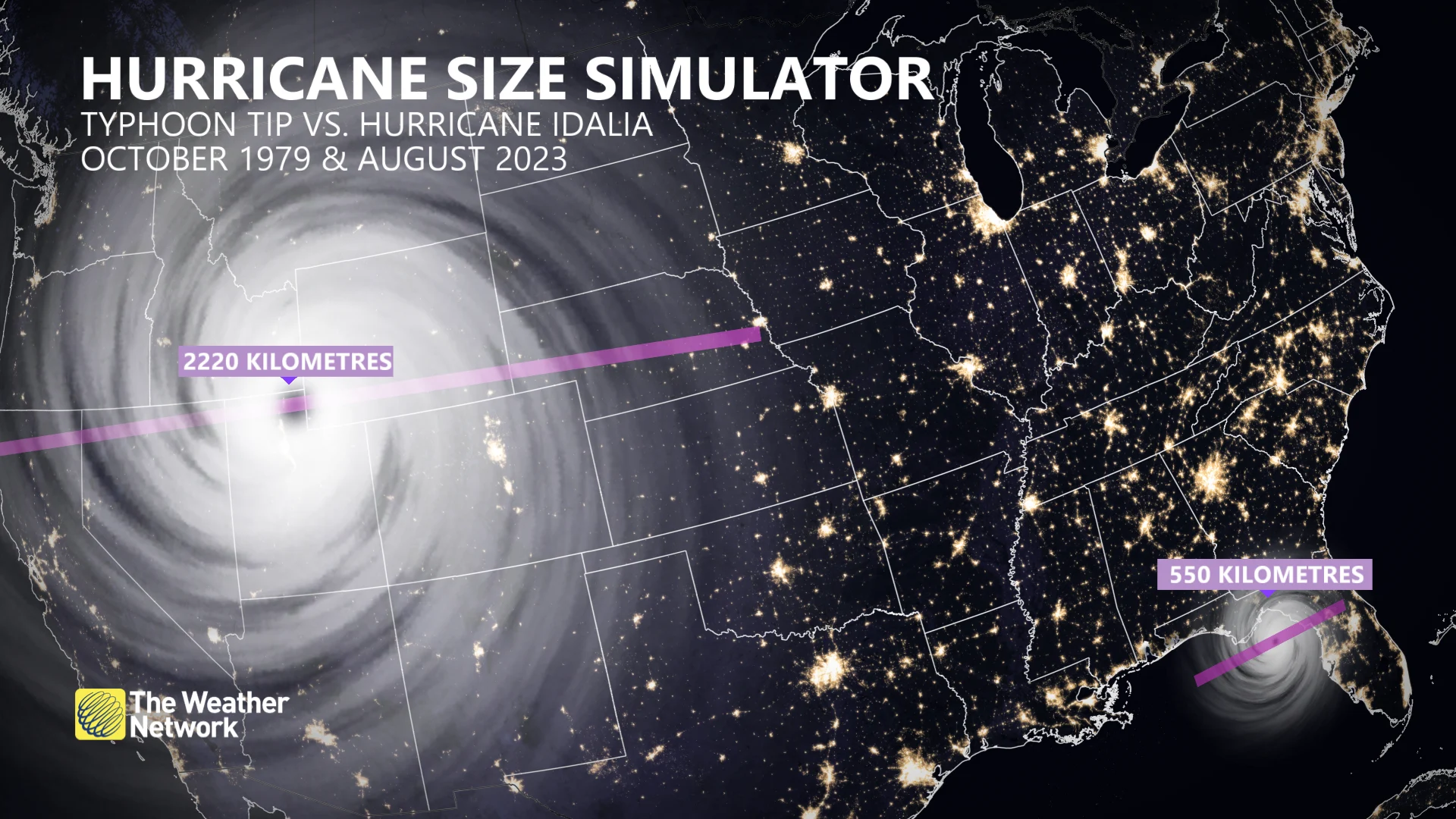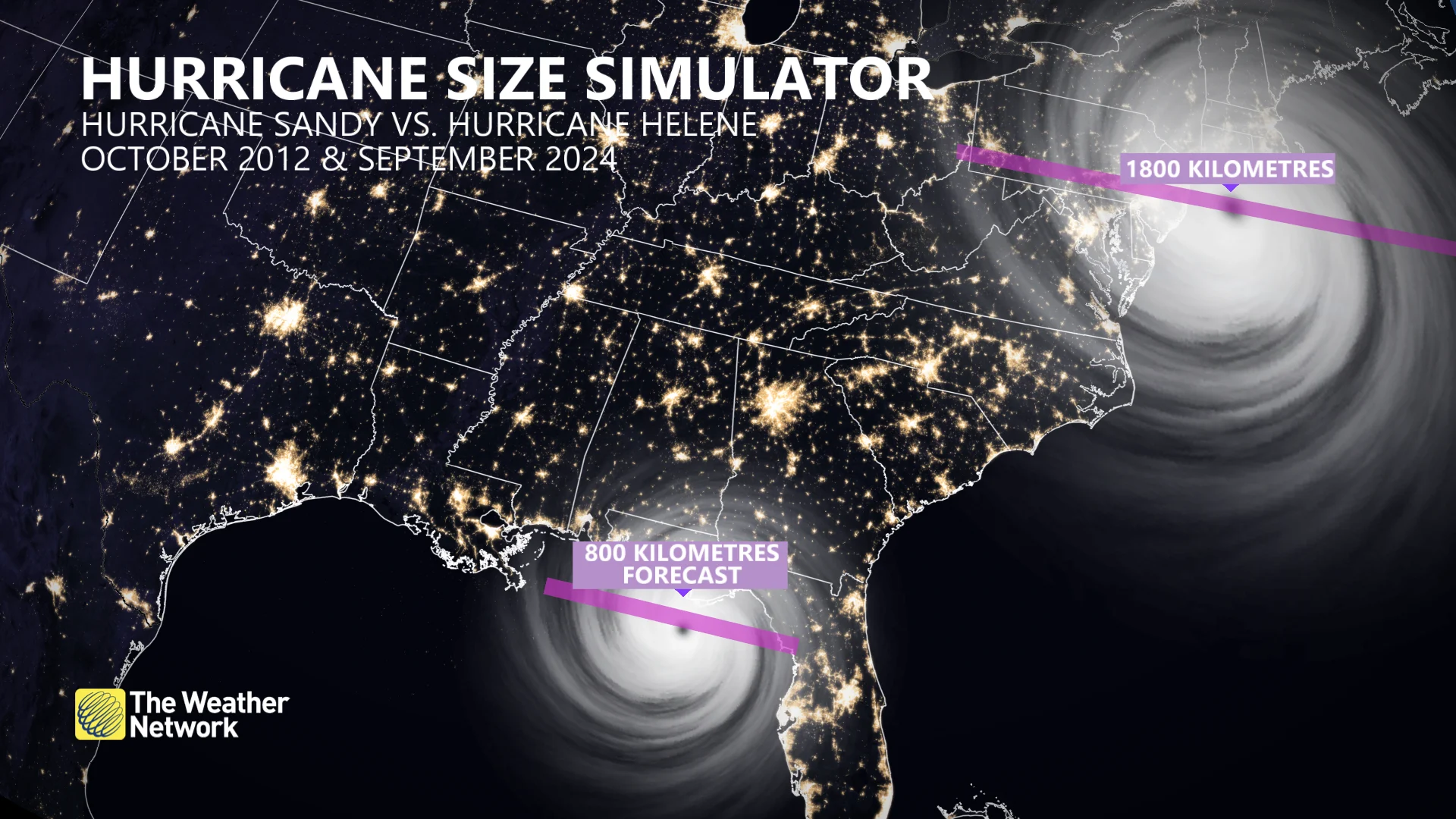
Hurricane Helene 'life-threatening' storm surge could reach upwards of 6 metres
Helene officially becomes a hurricane and is expected to bring life-threatening storm surge, damaging winds, and flooding rains to a large portion of Florida, the U.S. National Hurricane Center warns
Helene officially strengthened to hurricane status Wednesday morning, on its fast and powerful way to a Florida landfall on Thursday.
As of Wednesday morning, Helene swirled about 810 km southwest of Tampa, Fla., with maximum sustained wind gusts of 130 km/h making it a Category 1 storm. It could be a Category 3 major hurricane when it reaches the Florida Gulf Coast.
Hurricane and tropical storm warnings have been issued for parts of Florida and Mexico, as well as a storm surge warning for Tampa Bay. Hurricane watches remain in place for parts of Cuba. Residents are being urged to prepare quickly for impacts and heed any evacuation orders.
DON’T MISS: Closely watching as Helene moves, but here's why Canada will likely be spared
According the latest forecast from the U.S. National Hurricane Center (NHC), an increase in forward speed is expected later Wednesday, bringing the centre of Helene across the eastern Gulf of Mexico and to the Florida Big Bend coast by Thursday evening.
"After landfall, Helene is expected to slow down and turn toward the northwest over the southeastern United States Friday and Saturday," the NHC says.

Helene will continue to intensify
Helene is currently being forecast to reach major hurricane status, that means it will have undergone just 48 hours of rapid intensification over the extremely warm waters of the Gulf of Mexico.
MUST SEE: The Weather Network's hurricane hub for the latest updates on all tropical activity
A spectacularly perfect track will curve the storm in between Mexico and Cuba. That will allow the storm to continue growing its eye, without disruption to land. The track also takes the storm over the loop current, which funnels in very warm water northward into the Gulf of Mexico where the warmest waters are.

Florida landfall looming, thousands already evacuated
Landfall is expected along the Florida Panhandle, anywhere from Tampa to Tallahassee, Fla. Thousands have already evacuated, as time is now running out for residents to make appropriate plans for impact. The threat for flooding rains, damaging winds, and potentially life-threatening storm surge are all on the table. Power outages will likely be counted in the millions of customers.
There will be higher residential impacts if the track shifts east towards Tampa. Current trajectory to Florida’s Big Bend region is in a much lower population, so there should be a lower cost of damages depending on its eventual track.

A state of emergency has been declared for more than 40 Florida counties, including Lee, Collier, and Charlotte counties, as the state braces for the potential impacts of Helene.
The storm will span beyond Florida, as well, as much of the Southeast prepares for Helene's exceptionally large and widespread impacts even with the centre of the storm well away from the coast.
"We already have nearly 18,000 linemen staged (and more en route), and are ready with search and rescue and roadway clearing crews," shared Florida Gov. Ron DeSantis on X on Tuesday. "Stay tuned to local and state emergency recommendations and alerts. Get preparations in place now for the storm and heed evacuation directives, if issued, from local officials."

(The Weather Network's Mark Robinson will be live on location in Florida as Helene makes landfall)
Threat for considerable flash flooding with heavy rains
Total rain accumulations of 100 to 200 mm are forecast over western Cuba and the Cayman Islands, with isolated totals possibly reaching 300 mm. Over the eastern Yucatan Peninsula, 100 to 150 mm rain is expected with isolated totals over 200 mm.
Over the southeastern U.S., the storm is expected to produce total rain accumulations of 100 to 200 mm of rainfall, and isolated totals of 300 mm. This brings a risk of flooding, some of which could be considerable.
"This rainfall will likely result in areas of considerable flash and urban flooding, with areas of significant river flooding likely, including the risk of landslides in areas of steep terrain in the southern Appalachians," the NHC warns.
Life-threatening storm surge
Dangerous storm surge, and strong winds are also expected for portions of the northeastern Gulf Coast, including the Florida Panhandle and sections of Florida's west coast.

"The combination of a dangerous storm surge and the tide will cause normally dry areas near the coast to be flooded by rising waters moving inland from the shoreline," says the NHC.
In places like Tampa Bay, storm surge could reach between 1.5-2.5 metres, which will cause significant damage if peak heights come to fruition. Florida's Ochlockonee River could see storm surge as high as 4-5.5 metres, and some isolated areas could even see storm surge up to six metres high.
MUST SEE: Hurricane remnants can bring dangerous weather deep into Canada.
All models highlight Hurricane Helene will be well above average in terms of storm diameter, extending to more than 800 kilometres across. It’ll take up roughly half the size of the Gulf of Mexico, with impacts spreading in some cases to as much as 500 kilometres from the eye.

The largest hurricane diameter in history was Typhoon Tip in 1979, having a span exceeding 2,000 kilometres.
Helene is forecast to be about 60 per cent larger than Hurricane Idalia, which caused $3.6 billion worth of damage. Even though Helene is forecast to have a diameter close to 800 kilometres, it’s half of what Hurricane Sandy’s width was in October 2012.

Despite the unexpected lull in activity this hurricane season, remember that we could still see dangerous storms develop over the coming days and weeks. Coastal residents should closely monitor forecasts and have emergency preparedness kits ready to go long before a storm ever threatens land.










